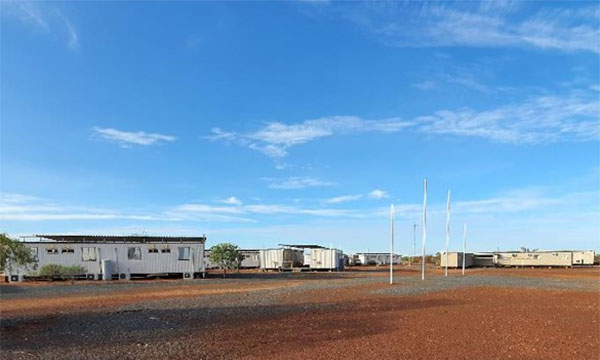OVERVIEW
Our 100% owned Coyote Gold Operation is located in the Tanami gold region, which is host to several multimillion-ounce gold deposits including Callie (14Moz Au), the Tanami Goldfield (3Moz Au), and Groundrush (1.7Moz). Since first production in 2006, the Coyote operation has recovered 211,220oz @ 4.9 g/t Au from open pits and underground for an average of ~35kozpa. Coyote was placed on care and maintenance in 2013 and was acquired by Black Cat in 2022.
Preliminary studies have identified opportunities for both an open pit cutback and subsequent underground operation. The operation has all the infrastructure required to restart operations, including a 300ktpa processing plant, 180+ person camp, and all associated supporting infrastructure.
The Coyote Gold Operation is the only gold processing facility in the Western Tanami region. This region is experiencing significant interest, with multiple exploration companies focused on areas adjacent to Coyote. Consequently, through this acquisition Black Cat is well positioned to be involved with proximal discoveries.



Current JORC 2012 Mineral Resource totals 3.7mt @ 5.5 g/t au for 645,000 oz.
The region is a classic orogenic system, dominated by the crustal scale Tanami Fault, with deposits generally hosted on splays off this fault (including Coyote and Callie). While the Northern Territory side of the system has been widely explored, limited exploration has occurred on the Western Australian side, particularly over the last 10 years.
GEOLOGY
Coyote is part of the Tanami Goldfields region, and is hosted within the Killi Killi Formation, part of the Tanami Group. Mineralisation is hosted within the axial plane and limbs of antiformal structures, with similar mineralisation controls to the nearby Callie deposit, and more broadly other slate-belt style areas like the Victorian Goldfields.
An extensive paleochannel overlies much of Coyote, including the majority of the prospective Coyote Stratigraphic sequence. The paleochannel varies from 9m-30m deep. It is therefore considered that drill holes <30m are likely to have been ineffective over much of the area. Furthermore, the Paleoproterozoic rock under the cover has a stripped profile, so gold anomalies are small and low grade.
The Coyote deposit is hosted within a parasitic anticline within the larger folded Coyote sequence. Gold is hosted both within the fold hinge, and the limbs as stratigraphy parallel gold veins. Veins generally range in 1cm to 10cm scale, and often form as swarms. Veins frequently display bonanza grades, with underground development face sampling often reporting >1,000 g/t Au across quartz veins and drilling returning grades of 0.80m @ 154.89 g/t Au from 277.5m (CYUG0359) in unmined areas.
DISCOVERY OPPORTUNITIES – NEAR MINE AND REGIONAL
The main mineralised structures at Coyote have limited drilling down plunge and remain untested along strike beyond the offsetting structures. Mineralisation also occurs within multiple stratigraphic horizons and is not closed off along strike of current Resources or at depth within new, undrilled horizons.
Regionally, it is unlikely that Coyote is the only significant deposit in the area and there has been limited effective drilling on a regional scale. With a package of 885km² of highly prospective tenements, there are a number of structural targets that have been identified for follow-up drilling.


